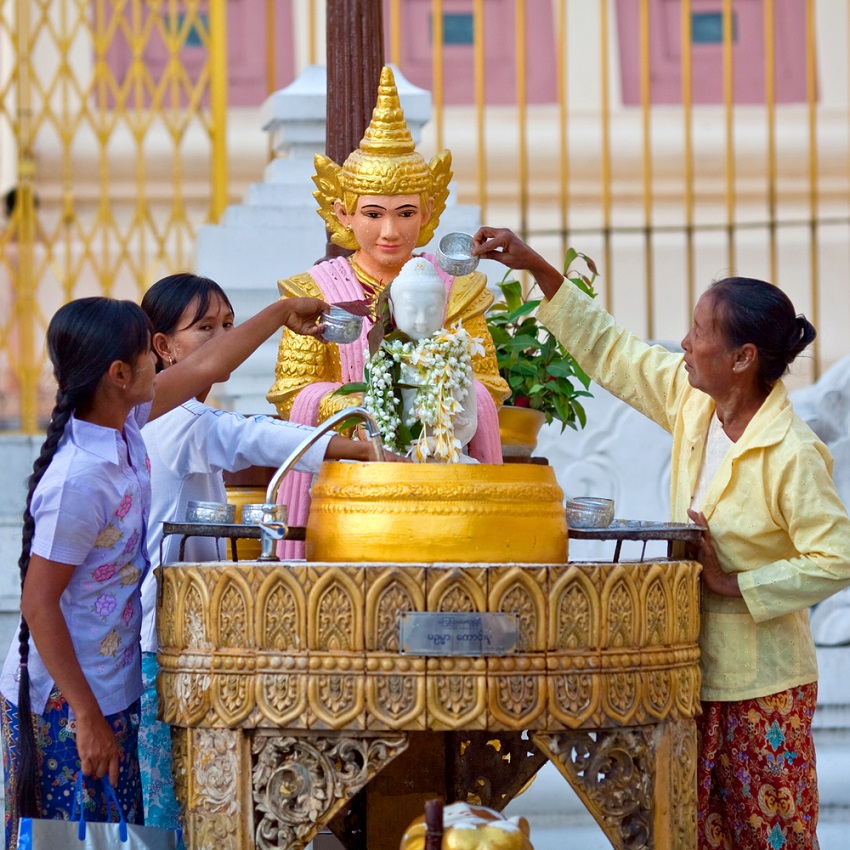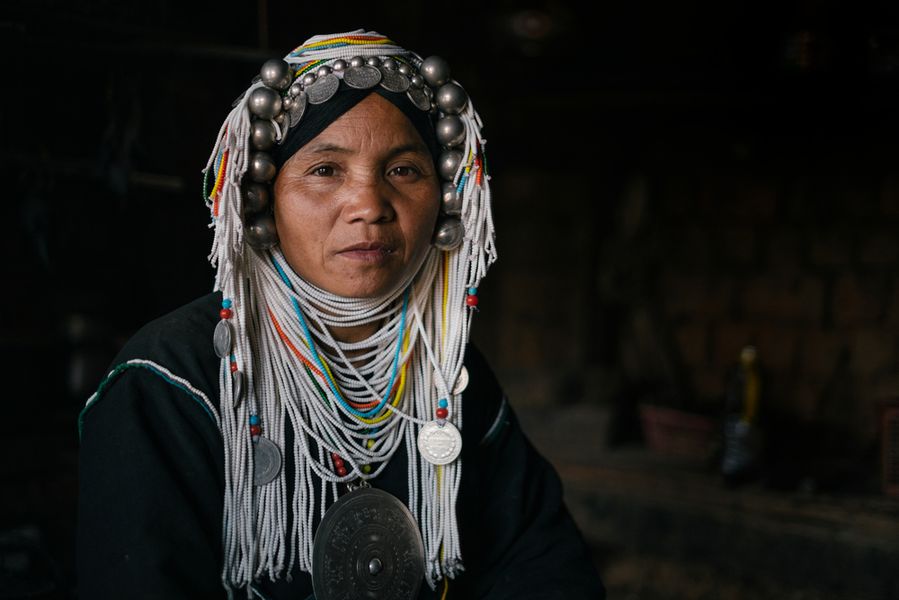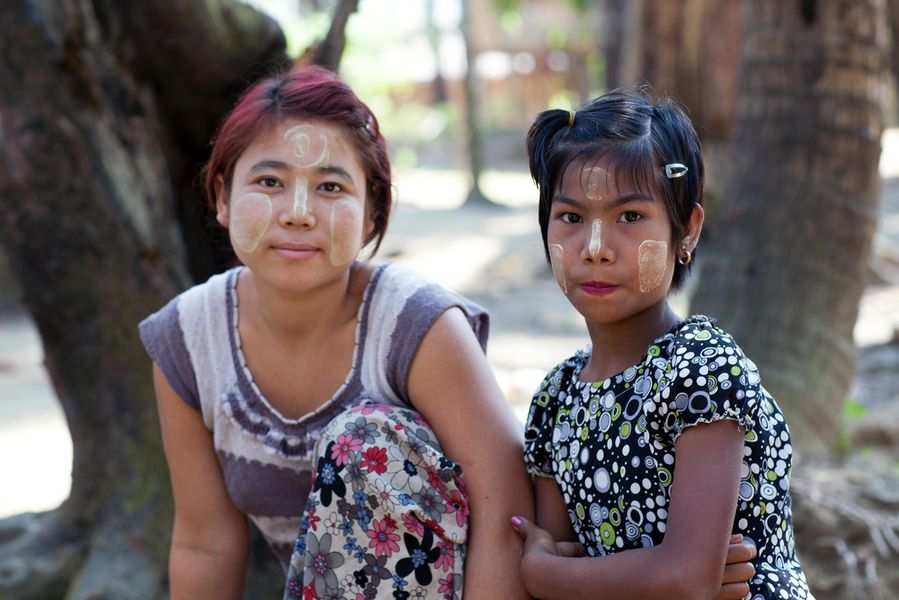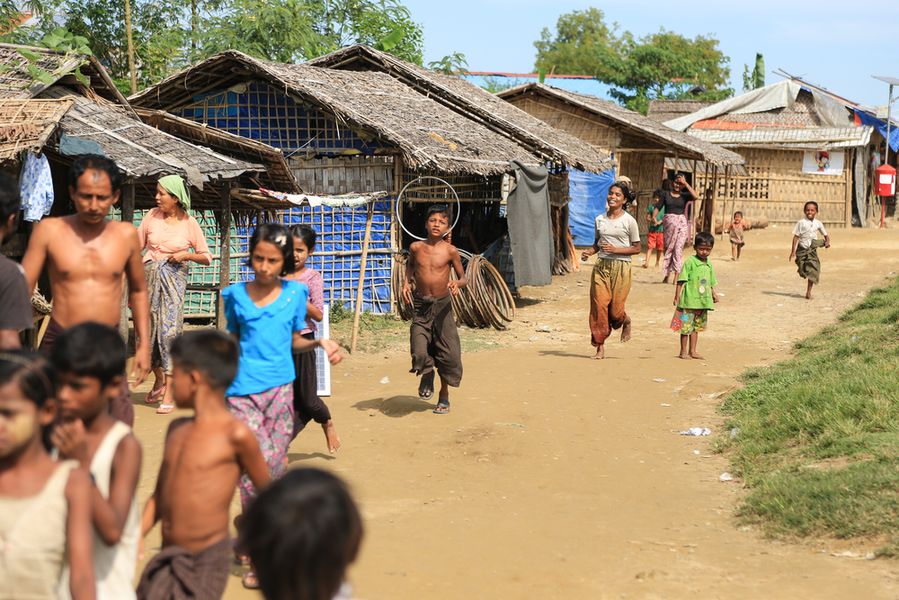Myanmar - ritual and festival
The Burmese society has been very static since it was closed off for over 30 years. The society itself has relied heavily on natural resources and folk knowledge allowing people to depend on themselves. The necessities are food, shelters, garments and medicines. (วิรัช นิยมธรรม และ อรนุช นิยมธรรม, 2551:81)
In terms of entertainments, the Burmese government takes full control so that any celebration should strictly follow the traditions. The Burmese entertainments resonate to religious and traditional festivals such as Song Kran Festival, sprinkling water on the Bodhi tree festival, lighting the lanterns festival and Kathin religious ceremony. These festivals are part of the twelve-month traditions found in almost every area. Some are considered national holidays. (วิรัช นิยมธรรม และ อรนุช นิยมธรรม, 2551:81)
Myanmar has carried out monthly traditions for a long time. It is the twelve-month traditions once being celebrated as royal ceremonies in those Burmese dynasty-ruled days. Though the traditions have been practiced, the details are a bit different. (วิรัช นิยมธรรม และ อรนุช นิยมธรรม, 2551:82-83)
The first month or Taku Month (March-April) marks a new year and the beginning month of summer. The tradition of this month is Song Kran Festival. The Burmese take it as a new year and join a play where they throw water at each other for 5 days. It is a blessed day so the Burmese visit the temples, observe the precepts, clean the temples’ yards and sprinkle water onto the Buddha images and pagodas. Pouring water on the elders’ hands, washing hair for the elders, avoiding killing animals and releasing cows, buffalos and fish to the nature are the acts of kindness usually performed during the festival. (วิรัช นิยมธรรม และ อรนุช นิยมธรรม, 2551:83)
The second month is called Kasong Month (April - May). There is a famous Burmese saying “less water in Taku, drought in Kasong”, so this month is primarily drought with warmer and humid weather. The Burmese invented a festival in which they sprinkle water onto the Bodhi trees in the full moon night. They believe this very day is the day when Lord Buddha had been born, was enlightened and died on the same say but at different times. After the Second World War, it was known as ‘the Buddha Day’. The Burmese visit the temples and pagodas where they observe the precepts and meditate. It is the month marking the beginning of rainy season, so the farmers prepare their rice fields. (วิรัช นิยมธรรม และ อรนุช นิยมธรรม, 2551:84)
The third month is called Nayhong Month (May-June). It is the month marking the beginning of cultivation. The rain is coming and the weather is cooling off. The schools are starting the new semesters. Thus, this month is the beginning of a new life. When Myanmar had its monarchy, the royal ploughing was held and called ‘the blessed ploughing’. Regarding Buddhism, this month is a studying month for Buddhist moral test. This practice has been continued since the reign of King Talunmingtaya of Inwa. In the past, there was only the oral exam. Now the writing and speaking parts are added. It is held in the first month or Taku Month. (วิรัช นิยมธรรม และ อรนุช นิยมธรรม, 2551 :84)
The fourth month is called Wahso Month (June-July). It is the Buddhist Lent month. The Burmese decided the full moon night of this month to be the Dharmachakra Day or the Wheel of Life Day in order to remember the birth of Lord Buddha, the entering monkhood day of Lord Buddha and the First Buddhist Sermon Day. The Burmese visit the temples and on the next day, in the waning moon night, the monks start the Lents. The Burmese women go out and pick flowers called Lent flowers and bring back to pay respect to the pagodas. In addition, offering monk cloths and candles are also seen. Another crucial activity is the entering monkhood ceremony as it was the day Lord Buddha had allowed the five Panchavachi to enter monkhood. The former Burmese kings patronized the ceremony for those passing the Buddhist moral test in Nayong Month. Since the rainy season starts in this month, the farmers sow rice seeds in their rice fields while joyfully singing. (วิรัช นิยมธรรม และ อรนุช นิยมธรรม, 2551:84)
The fifth month is called Wakhong Month (July-August). It is a month of food offering feast with drawing lots. Now the famous national festival featured in the feast is the worshipping Nat ceremony at Toungpayong village in the outskirt of Mandalay. It is raining heavily in this month. (วิรัช นิยมธรรม และ อรนุช นิยมธรรม, 2551:85)
The sixth month is called Totaling Month (August-September). It is the month when the rivers are likely bursting the banks. In many local areas, the boat racing competitions are joyfully held. This month sees timber rafts floating along Irrawaddi River to the destination at Yangon port. The fishermen start casting fishnets since fish are plentiful in this month. (วิรัช นิยมธรรม และ อรนุช นิยมธรรม, 2551:85)
The seven month is called Dadingjut Month. In the full moon night of this month, the monks traditionally give constructive criticism to each other. The Burmese call it the higher Buddhist doctrine day as Lord Buddha descends on earth after he has taught higher Buddhist doctrines for three months. The lighting lantern festival is also featured. The lanterns can be in shapes of Phoduto, elephant and tiger just to pay respect to Chulamani Pagoda in the second level of heaven where Indra dwells. In Shan State, there is a worshipping ceremony dedicated to Pongto U or the five images of Buddha at Nanhu village located in the center of Inle Lake. The Pongto U is believed to have survived since the era of King Alongsitu of Bagan. On the next day, it is the waning moon night of this month when a tradition of asking for forgiveness from parents and teachers is held. The Burmese usually hold wedding ceremonies in this night of the month since believing the cupid needs resting during the Lent. Therefore, the wedding ceremonies are to be held afterwards. (วิรัช นิยมธรรม และ อรนุช นิยมธรรม, 2551:85)
The eighth month is called Dasongmhong Month (October- November). It is the season changing month when the winter season is about to begin. The first half of his month is still rainy but the second half is cool. The farmers start harvesting their crops. In terms of Buddhism, it is when the Kathin religious ceremony takes place starting from the waning moon night of the previous month to the full moon night of this month. The almshouses are featured and on the last day of the festival, the Burmese hold the minor Kathin religious ceremony called Matotingkang meaning unspoiled monk cloths. It is a metaphor of food that is not spoiled so that the festival takes only one day. It starts with spinning cotton threads, weave into cloths, dye the cloths and cut the monk cloths out of it. The month also sees the lighting lantern festival and offering shrouds to the monks. (วิรัช นิยมธรรม และ อรนุช นิยมธรรม, 2551:86) However, unlike Thai lantern festival, the Burmese do not float their lanterns. They stick to the old tradition where lighting the lanterns is the only practice. (สิทธิพร เนตรนิยม, 2558)
The ninth month is called or Nadaw Month. It is the month when rice harvesting is finished. The farmers thresh rice and stack hays. In the past, it was the time to pay respect to Nat at Popa Mountain in Bagan. However, it is now the month marking celebrations for Burmese poets and sages starting in the waning moon night. The tradition has been carried out since 1944. Reading poetry and literature seminars at different schools are held. In those dynasty days, this month was taken as a time of giving title ceremony to warriors, governors and poets. (วิรัช นิยมธรรม และ อรนุช นิยมธรรม, 2551:86)
The tenth month is called Pyatou Month (December-January). It is so cold in this month the Burmese female poet even recorded ‘Pyatou Month is so cold. I am shaken. Fire does not feel warm. No blankets could help.’ The farmers need to watch out for unpredictable rains that would ruin their crops. If it rains on sesame, it is ruined. The Burmese call it ‘rains ruining sesame.’ The cold weather continues to next month. In the past, it was the time when showdown battles featuring elephants, horses and other weapons were held. The Burmese government attempted to bring it back to encourage the country’s tourism in 1996, but it only lasted for a year. (วิรัช นิยมธรรม และ อรนุช นิยมธรรม, 2551:87)
The eleventh month is called Dabawdwe Month (January-February). It is the month dedicated to Lord Buddha who fought against coldness. It is believed getting warmed by fire would help the four elements achieve balance. The Burmese hold a fire-worshipping ritual for Lord Buddha and the pagodas represented the Lord. The ritual is held in some areas. In addition, the Burmese cook Tamanae or sweetened rice in this month as they start harvesting rice and make sugar out of sugar palm tree. It is a common sight in the central and upper parts of Myanmar. (วิรัช นิยมธรรม และ อรนุช นิยมธรรม, 2551:87)
The twelfth month is called Daboung Month (February-March). The weather is warmer in this month and it marks the beginning of summer season. The famous tradition is building a sand pagoda tradition in which the pagoda is a replica of the mythical Phra Sumaru Mountain. It was held in those dynasty days, but is cancelled now. According to folk chronicles, it is believed Shwedagon Pagoda was built in this month, so it is when the Shwedagon celebration takes place too. Daboung Month is the last monthof Burmese calendar. (วิรัช นิยมธรรม และ อรนุช นิยมธรรม, 2551:88)
Song Kran Festival
April or Taku Month is summer. The sun is shining above the heads and lakes and rivers are becoming drought. In 1997, Myanmar marked that the Song Kran Festival would be during 14-16 April. (วิรัช นิยมธรรม และ อรนุช นิยมธรรม, 2551:89)
Myanmar celebrates the new year on this month with Song Kran Festival. It is the liveliest festival of the twelve-month festivals. The Buddhist Burmese take Song Kran as a perfect timing to perform good deeds, so they visit temples, observe the five precepts and join Buddhist religious activities. Moreover, they prefer letting their sons enter the monkhood in this month. The daughters usually get their ears pierced and enter the female-monkhood too. Song Kran is not only a religious festival but also a joyful festival for the youth. They can freely express themselves by throwing water at each other, singing, dancing and getting dressed as they like.
The seven flowers of Song Kran Festival are called Song Kran flowers or Tajungpang. Golden shower trees and Burma Paduak are everywhere. Burma Paduak bloom after the season changes, so it is called ‘Song Kran Rain’ or Tajungmo. The Burmese dress up their hair with Burma Paduak. Before it is going to rain, some even pick the flowers for sale. Burma Paduak is the Festive flowers. Song Kran features a festive snack which is coconut balls. The Burmese cook and give their relatives and friends. The Mon cook rice in cold water called Tajungtaming meaning the rice of Song Kran. (วิรัช นิยมธรรม และ อรนุช นิยมธรรม, 2551:91)
Playing and throwing water during the festival can be at many levels depending on one’s limit. The softest level is to dip a Jambolan-plum leaf into water in a silver container and touch that leaf on one another’s shoulder. The leaf is considered a blessed plant called Aungtapye signifying ‘achievement’. The Burmese pay respect to the monk with this kind of leaf, or sometimes decorate their shops, vehicles with it and carry it anywhere. Another way to politely play water is to pour on the shoulders while playing for fun is to throw water and use rubber tubes. Some even make water balls and throw at each other. The government has strictly forbidden. One might go to jail for that. (วิรัช นิยมธรรม และ อรนุช นิยมธรรม, 2551:91-92)
After playing water for 3 days, the next day is a new year. The Burmese offer flowers and lanterns, sprinkle water onto the Buddha images and pray to the pagodas. They join the chanting session and offer food to the monks. Paying respect to the master and teacher ritual is practiced. The Burmese wash their hair, cut fingernails for the elders and give new clothes to those they respect. Freeing cows, buffaloes, birds and fish is also seen. Famous pagodas and temples are crowded especially in Yangon where people pray to Shwedagon Pagoda, Mahavishya Pagoda, Kabae Pagoda, Sure Pagoda, Shawtadgi Pagoda, Ng-atadgi Pagoda, Gotadgi Image and Maelamhu Temples. (วิรัช นิยมธรรม และ อรนุช นิยมธรรม, 2551:92-93)
Paying respect to Buddha Pagoda Ritual
This ritual is practiced in Dasongmong Month (October-November) after the rainy has passed. It is when the Buddhist Lent is over and the farmers finish harvesting their crops. In Burmese language, pagoda is Pya equivalent to Buddha, thereby; Buddha Pagoda is a representation of Lord Buddha. The pagodas’ yards cannot be a monk resident, but are preserved for Buddhist practices. This ritual is Pya-Bwedaw in Burmese. Pya means Buddha Pagoda and Bwe means a ritual. Daw is a prefix ending the words signifying something revered.
The Burmese have closer relation to the pagodas. In Yangon, Shwedagon is the most revered pagoda with a belief it contains 8 hairs of Lord Buddha. People visit the place to sprinkle water onto the Buddha images standing on the foot of the pagoda and pray to the sacred entities there. Some go shopping for Buddhist doctrine books or finding a prophesy. The pagodas in Myanmar are both a sacred and leisure place. (วิรัช นิยมธรรม และ อรนุช นิยมธรรม, 2551:95)
As entering to the pagoda, everyone needs to take off the shoes. It once sparked a conflict in 1918 when the foreigners did not take off their shoes entering the sacred place. The Burmese exploited this incident against the British ruling Myanmar at that time. They created a carton conveying male and female foreigners rode the back of the Burmese walking bare feet in the pagoda area. Wearing shoes or socks to any pagodas is prohibited. (วิรัช นิยมธรรม และ อรนุช นิยมธรรม, 2551:95)
Bibliography
วิรัช นิยมธรรม และ อรนุช นิยมธรรม. (2551). เรียนรู้สังคมและวัฒนธรรมพม่า. พิษณุโลก: โรงพิมพ์ตระกูล.
สิทธิพร เนตรนิยม. (2558). ตะซาวง์ไดง์ จุดไฟตามประทีปในพม่า. ใน พิพัฒน์ กระแจะจันทร์, ลอยกระทง เรือพระราชพิธี วัฒนธรรมน้ำร่วมราม (หน้า 57-63). กรุงเทพฯ: สำนักงานคณะกรรมการการศึกษาขั้นพื้นฐาน กระทรวงศึกษาธิการ ร่วมกับฝ่ายวิชาการ คณะศิลปศาสตร์ มหาวิทยาลัยธรรมศาสตร์.





